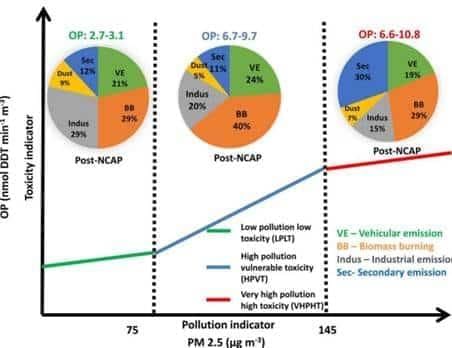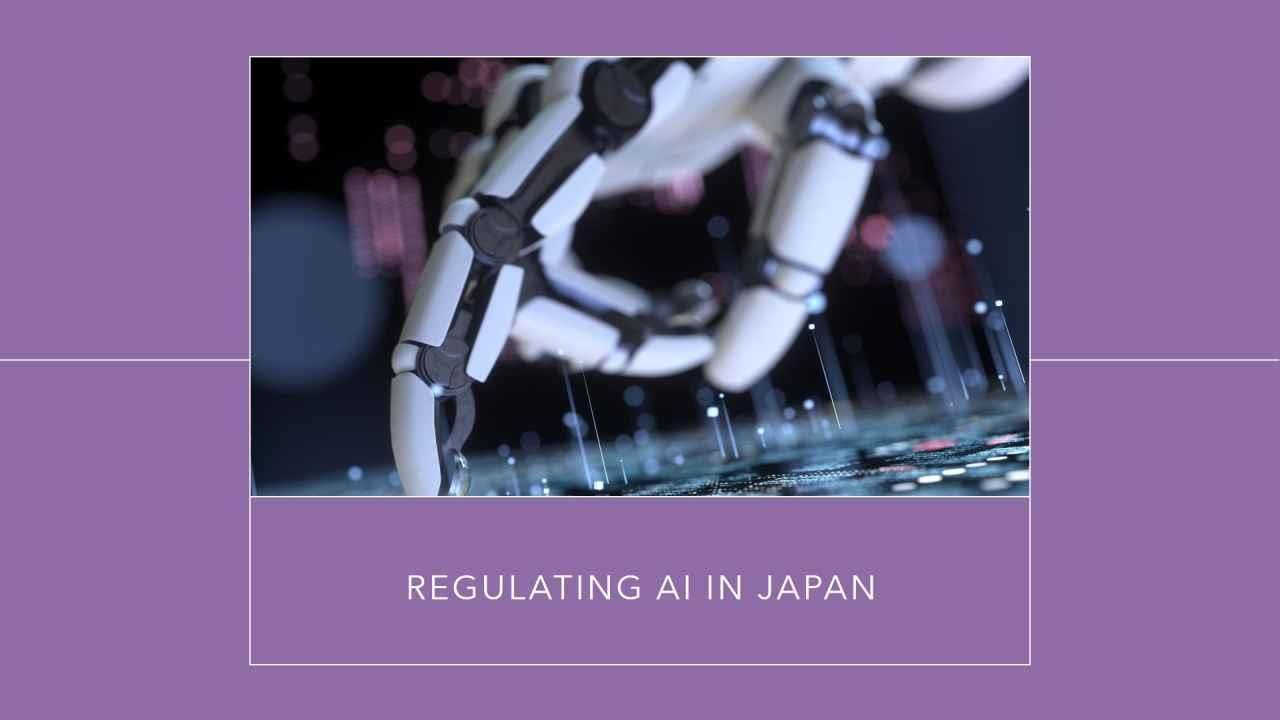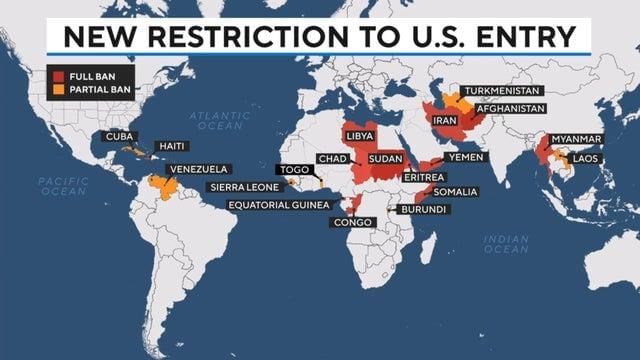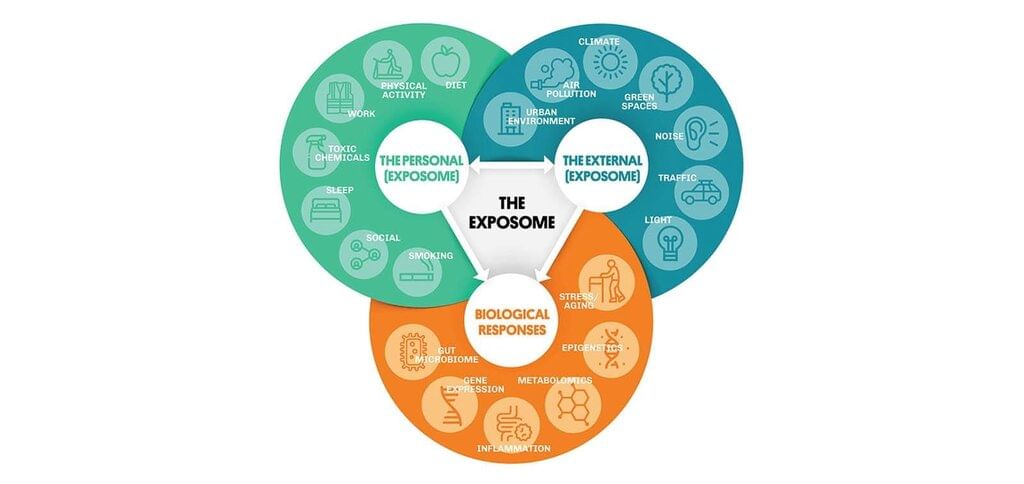Weekly Current Affairs (1st to 7th June 2025) | General Test Preparation for CUET UG - CUET Commerce PDF Download
Indian Army’s Capacity Development Demonstrations
Why in News?
- The Indian Army is actively conducting extensive Capacity Development Demonstrations at several key locations across India, such as the Pokhran and Babina Field Firing Ranges and Joshimath. These demonstrations are aimed at evaluating advanced defence systems under conditions that closely simulate combat scenarios. The initiative integrates electronic warfare simulations to rigorously test the performance of these systems and is a significant part of the Indian Army's vision for a "Decade of Transformation."
Key Takeaways
- The primary goal is to enhance operational readiness.
- The Army aims to quickly adopt emerging technologies.
- This initiative supports the Aatmanirbhar Bharat campaign, promoting self-reliance in defence manufacturing.
- It reflects increased collaboration between the Army and domestic defence manufacturers.
Additional Details
- Key Technologies Under Evaluation:A range of advanced technologies is being tested, including:
- Unmanned Aerial Systems (UAS)
- UAV-Launched Precision Guided Munitions (ULPGM)
- Runway Independent Remotely Piloted Aerial Systems (RPAS)
- Counter-UAS Solutions – Loitering Munitions
- Specialised Vertical Launch (SVL) Drones
- Precision Multi-Munition Delivery Systems
- Integrated Drone Detection and Interdiction Systems (IDDIS)
- Low-Level Light-Weight Radars
- VSHORADS (Next Generation Infrared Systems)
- Advanced Electronic Warfare Platforms
- Emerging Trends in Warfare: There is a notable convergence of warfare domains. Modern conflicts necessitate integration across air, land, sea, cyber, and space. The Indian Army is transitioning towards distributed and non-linear strategies to better respond to the evolving nature of military engagements.
- Role of Academia and Industry: The participation of academia and the private sector in India is vital for addressing defence challenges. With a considerable number of STEM graduates, there is a significant opportunity to drive innovation and enhance defence capabilities.
In summary, the Capacity Development Demonstrations signify a critical step towards modernizing the Indian Army and enhancing its operational capabilities through the integration of advanced technologies and collaboration with domestic industries.
PM2.5 Air Pollution Threshold and Toxicity Levels
 Why in News?
Why in News?
- Recent research has highlighted the critical threshold for PM2.5 air pollution in Kolkata, indicating that once the concentration exceeds 70 micrograms per cubic metre (µg/m³), the potential for cellular damage significantly increases. This finding underscores the need for revised air quality standards that prioritize toxicity levels alongside concentration measurements.
Key Takeaways
- PM2.5 refers to particulate matter smaller than 2.5 micrometres, originating from sources such as vehicular emissions and industrial activities.
- The toxicity of PM2.5 sharply escalates beyond the 70 µg/m³ threshold, necessitating urgent attention to air quality standards.
Additional Details
- PM2.5 and Health Risks: These fine particles can penetrate the lungs and bloodstream, leading to severe respiratory and cardiovascular problems.
- Research from the Bose Institute reveals that between 70 and 130 µg/m³, the risk of harm increases, while beyond this point, toxicity levels stabilize, indicating a maximum point for cellular damage.
- At lower concentrations, the body can mitigate inhalation effects. However, exceeding the threshold overwhelms the body's defenses, leading to oxidative stress from Reactive Oxygen Species (ROS).
- Antioxidants play a crucial role in neutralizing ROS, but their production is limited, making it challenging for the body to cope with high PM2.5 levels.
- The toxicity thresholds can vary by city due to different pollution compositions, affecting how each area responds to PM2.5 exposure.
This research advocates for the establishment of toxicity-based air quality standards to provide timely warnings and protective measures for public health as pollution levels rise.
NAKSHA Programme

Why in News?
The NAKSHA programme, launched by the Government of India, focuses on reforming urban land surveys through the use of advanced geospatial technologies. With the rapid increase in urban populations, accurate land records have become essential. The second phase of capacity-building training commenced on June 2, 2025, following a successful first phase that trained 160 master trainers. This initiative includes 304 officers from 157 Urban Local Bodies (ULBs) across the country.
Key Takeaways
- NAKSHA stands for National Geospatial Knowledge-based Land Survey of Urban Habitations.
- The initiative aims to improve the accuracy and accessibility of urban land records.
- It supports urban governance and planning, addressing the needs of a projected urban population of over 600 million by 2031.
Additional Details
- Objectives of the Programme:The main goals include:
- Modernizing urban land records for improved accuracy and accessibility.
- Supporting smart city initiatives through enhanced urban planning capabilities.
- Reducing land disputes with clear ownership documentation.
- Promoting transparency in land records through a Web-GIS-based IT system.
- Facilitating sustainable urban development and governance.
- Training and Capacity Building:The programme will be conducted at five Centres of Excellence (CoEs) across India, including:
- Lal Bahadur Shastri National Academy of Administration, Mussoorie
- Yashwantrao Chavan Academy of Development Administration, Pune
- Northeast Region Centre of Excellence, Guwahati
- Mahatma Gandhi State Institute of Public Administration, Chandigarh
- Punjab Administrative Training Institute, Mysuru
- Key Features of NAKSHA:The programme incorporates several innovative elements:
- Drone-Based Surveys: Drones are utilized for high-precision aerial mapping, enhancing survey accuracy.
- Web-GIS Platform: An integrated IT system allows for the digital management of land records, increasing accessibility.
- Public Access: Citizens can easily access digital land records, promoting transparency and minimizing bureaucratic challenges.
- Implementation and Funding: The programme is implemented by the Department of Land Resources in collaboration with the Survey of India and the National Informatics Centre Services Inc. (NICSI). It is fully funded by the Government of India, with an estimated budget of ₹194 crore. A pilot phase has already launched in 152 ULBs across 26 states and 3 Union Territories.
In conclusion, the NAKSHA programme represents a significant step towards modernizing urban land management in India, ensuring that land records are accurate, accessible, and conducive to sustainable urban growth.
India’s EV Manufacturing Guidelines
 Why in News?
Why in News?
- The Government of India has unveiled new guidelines aimed at enhancing the domestic production of electric vehicles (EVs). This initiative, known as the Scheme to Promote Manufacturing of Electric Passenger Cars in India (SPMEPCI), is designed to attract global manufacturers to invest in local production, particularly in light of Tesla's hesitance to establish manufacturing operations in the country.
Key Takeaways
- The SPMEPCI offers a reduced import duty of 15% for completely built units (CBUs) under specific conditions.
- Manufacturers can import up to 8,000 electric vehicles annually at a concessional duty rate.
- The scheme is effective for five years following its approval date.
- Investment of at least ₹4,150 crore (approximately $500 million) is required to qualify.
Additional Details
- Domestic Value Addition (DVA): Manufacturers must achieve a minimum DVA of 25% within three years and 50% within five years to ensure local resource utilization.
- Import Duty Eligibility: Approved applicants can import CBUs of electric four-wheelers with a minimum CIF value of $35,000, benefiting from a reduced customs duty of 15% for a maximum of 8,000 units per year. Any unused quota can be carried over to subsequent years.
- This initiative has garnered interest from European manufacturers like Mercedes-Benz and Volkswagen, as well as South Korean companies Hyundai and Kia, while Tesla's interest remains limited to establishing showrooms.
The SPMEPCI is a strategic move by the Government of India to position the nation as a key player in the global electric vehicle market. By fostering local manufacturing capabilities, it is expected to create jobs and enhance the overall industry landscape. Manufacturers not complying with the guidelines will be subject to standard customs duties; for vehicles costing over $40,000, the duty is currently set at 110%, serving as a deterrent against non-compliance.
Indian Navy and EUNAVFOR Joint Naval Exercise

Why in News?
- The Indian Navy is set to conduct a significant joint naval exercise with the European Union Naval Force (EUNAVFOR) on June 3, 2025. This collaborative exercise will involve ships and aircraft from both entities, aimed at enhancing interoperability and addressing non-traditional maritime threats. Such collaboration marks a crucial step towards reinforcing maritime security in the Indian Ocean Region.
Key Takeaways
- The joint exercise aims to improve tactical coordination and operational readiness.
- Key participants include the Spanish frigate ESPS Reina Sofia and the Italian frigate ITS Antonio Marceglia.
- The collaboration stems from recent diplomatic discussions between India and the EU regarding international peace and security.
- Engagement activities during the exercise will focus on combating piracy and smuggling.
Additional Details
- Background of the Collaboration: The exercise follows a port visit by the Spanish frigate ESPS Reina Sofia and the Italian frigate ITS Antonio Marceglia to Mumbai, marking a historic first under the European Union's aegis.
- Engagement Activities: Both naval forces engaged in Subject Matter Expert Exchanges (SMEEs) and a Table Top Exercise (TTX) to enhance coordination at sea.
- Maritime Security Dialogue: This exercise reflects the outcomes of the 4th India-EU Maritime Security Dialogue held in March 2025, emphasizing a commitment to a rules-based maritime order.
- The joint efforts are intended to foster deeper multi-domain cooperation and protect lawful trade while countering illegal maritime activities.
The upcoming joint naval exercise is poised to strengthen strategic ties between India and the European Union, enhancing military cooperation and ensuring a secure maritime environment in the Indian Ocean.
Mount Etna Erupts Again
 Why in News?
Why in News?
- Mount Etna, located in Sicily, Italy, experienced an eruption on June 2, 2025. This event adds to the volcano's extensive history of activity. Authorities have reported that there is no immediate danger to nearby residents, although the alert level at Catania Airport has been elevated due to an ash cloud that ascended several kilometers into the atmosphere. The eruption concluded by the afternoon, highlighting the dynamic nature of Mount Etna.
Key Takeaways
- Mount Etna erupted on June 2, 2025, with no immediate threat to residents.
- The alert level at Catania Airport was raised due to ash clouds.
- Mount Etna is a UNESCO World Heritage Site and one of the most active volcanoes worldwide.
Additional Details
- Mount Etna: This volcano is classified as a stratovolcano, known for its conical shape formed by viscous lava around the vent. It has a documented eruption history exceeding 2,700 years and stands at approximately 3,300 meters, making it around four times taller than the Burj Khalifa.
- Historical Significance: Mount Etna has a rich eruptive history that dates back about 500,000 years. The most significant eruption occurred in 1669, when lava flow reached the city of Catania, causing extensive damage. Notable recent eruptions include activity in 2024, which resulted in temporary airport closures.
- Volcanic Monitoring: The National Institute of Geophysics and Volcanology (INGV) in Italy closely monitors Mount Etna, providing updates on seismic activities and potential eruptions. The Civil Protection Department has implemented measures to manage lava flows, such as constructing earthen barriers during eruptions.
- Future Eruptions: Given its history, Mount Etna is expected to continue its eruptive activity. Ongoing studies of its patterns are crucial for disaster preparedness and response, ensuring the safety of residents and tourists in the area.
In summary, Mount Etna's recent eruption underscores its status as one of the world's most active volcanoes, with ongoing monitoring and historical significance that highlight the importance of awareness and preparedness among local communities.
Waqf UMEED Portal
 Why in News?
Why in News?
- The Waqf UMEED portal is scheduled to officially launch on June 6, 2025. This initiative aims to digitize and streamline the registration process of Waqf properties throughout India. The launch is a direct result of the Waqf (Amendment) Bill, 2025, which received presidential assent on April 5, 2025. The primary goal of this portal is to enhance transparency and efficiency in the management of Waqf properties.
Key Takeaways
- The Waqf UMEED portal will digitize Waqf property registration.
- It aims to provide beneficiaries with digital access to their rights.
- Unregistered properties after the deadline will be deemed disputed.
- User support services will enhance legal awareness.
Additional Details
- What is Waqf? Waqf refers to a charitable endowment in Islamic law, where properties are donated for religious or public welfare. Such properties cannot be sold or inherited and are intended for community benefit.
- Objectives of the UMEED Portal: The portal aims to ensure transparent registration, empower beneficiaries, resolve property disputes, and enhance accountability.
- Key Features:
- All Waqf properties must be registered within six months of the portal's launch.
- Geotagging and digitization will require precise measurements and location data.
- Unregistered properties post-deadline will be declared disputed and referred to a tribunal.
- User support services will be available for legal awareness.
- Waqf (Amendment) Act, 2025 Reforms: This act establishes an appeals mechanism for Waqf Tribunal decisions, allowing appeals in High Courts within 90 days. It enforces mandatory digital registration within six months and increases government oversight through enhanced monitoring by State Waqf Boards.
- Criticism and Concerns: Despite its benefits, the initiative has faced criticism for potentially marginalizing certain communities. Critics are advocating for more dialogue and protective measures to ensure fair implementation of the law.
The government has made extensive arrangements to ensure the effective implementation of the UMEED portal, aiming to create a transparent system for managing Waqf properties. The success of this initiative will largely depend on its acceptance by various stakeholders and its ability to address the concerns raised during discussions.
Japan’s Innovative Approach to Artificial Intelligence Legislation
 Why in News?
Why in News?
- On June 4, 2025, Japan enacted a new law aimed at fostering research and development in artificial intelligence (AI), known as the Act on the Promotion of Research, Development and Utilisation of Artificial Intelligence-Related Technologies. This legislation positions Japan as a frontrunner in the global AI arena, opting for an innovation-friendly framework rather than strict regulations.
Key Takeaways
- Japan's AI law establishes an Artificial Intelligence Strategy Headquarters under the Cabinet.
- The law promotes innovation over rigid regulatory frameworks, encouraging collaboration among stakeholders.
- Japan's approach contrasts with the European Union’s stringent AI Act, which imposes strict obligations based on risk classifications.
Additional Details
- Artificial Intelligence Strategy Headquarters: This body is tasked with developing a national Basic Plan for AI that includes foundational research, industrial deployment, international collaboration, and public education.
- Comparison with the European Union: The EU's AI Act uses a risk-based classification system, categorizing AI systems into different tiers and imposing penalties for non-compliance, emphasizing human dignity and digital sovereignty.
- Philosophy Behind Japan's Approach: The legislation operates on the belief that innovation thrives in low-regulation environments and that voluntary cooperation can address AI-related risks.
- Challenges: Concerns arise over accountability due to the lack of clear standards, potentially leading to unreported harms related to bias and algorithmic failures.
- Geopolitical Context: Japan's law is a response to economic challenges like a declining workforce, promoting international cooperation to set norms in AI regulation.
- Future Outlook: The law emphasizes institutional trust and collaboration among various sectors to ensure ethical AI development, with provisions for future reviews to adapt policies as needed.
Japan's new AI legislation represents a strategic shift towards promoting innovation while addressing the complexities of AI implementation. The emphasis on collaboration and voluntary principles aims to ensure that AI development aligns with societal values, though it must navigate significant challenges related to accountability and ethical standards.
G7 Leaders’ Summit 2025
Why in News?
- The year 2025 marks the 50th anniversary of the Group of 7 (G7) meetings. Canada is set to host the G7 Leaders’ Summit from June 15 to 17 in Kananaskis, Alberta. This will be Canada's seventh time in this role, and notably, India has not received an invitation, signifying its first absence since 2019, where Prime Minister Narendra Modi attended every summit except for the cancelled 2020 meeting.
Key Takeaways
- The G7 summit is a significant international event involving seven major economies.
- Canada is hosting the G7 for the seventh time in history.
- India's absence in 2025 marks a notable shift in attendance since its consistent participation since 2019.
Additional Details
- About G7: The G7 is an informal group consisting of seven major economies: the United States, Canada, France, Germany, Italy, Japan, and the United Kingdom. Collectively, these nations represent approximately 40% of the world's GDP and 10% of its population.
- Historical Background: The G7 originated from a 1973 meeting of finance ministers and central bank governors in Paris, aimed at addressing economic challenges like the oil crisis and inflation. The first official summit was held in 1975 in Rambouillet, France, initially involving six nations, with Canada joining the following year.
- Presidency and Organisation: Each member country holds the presidency in rotation, responsible for organizing the summit and setting the agenda. Currently, Canada holds the presidency.
- Focus Areas: Initially centered on international economic policy, the G7 has expanded its scope to include foreign policy and security issues, influencing global governance and decision-making.
- Guest Countries: The host country usually invites additional nations as guests. For the 2025 summit, Canada has invited Ukraine and Australia, with more guest countries yet to be announced.
This summit serves as a crucial platform for discussing shared values and global concerns among member nations, shaping policies that affect the international community.
Thermophilic Bacteria
Why in News?
- Thermophilic bacteria, known for their ability to thrive in extreme heat, have been highlighted for their potential in antibiotic production and combating antibiotic resistance. They can survive temperatures ranging from 45 to 70 degrees Celsius, making them significant in scientific research and applications.
Key Takeaways
- Thermophilic bacteria are resilient microorganisms found in extreme environments.
- They play a crucial role in the production of antibiotics.
- Recent research in Rajgir hot springs has unveiled potential new antibiotic sources.
- These bacteria also have applications in industrial and agricultural fields.
Additional Details
- Thermophiles: These are microorganisms that thrive in high-temperature environments such as hot springs, deep-sea vents, and compost piles. Their habitats are rich in minerals and have fewer competing species, which allows them to flourish.
- Antibiotic Production: Many thermophilic bacteria, particularly Actinobacteria, are known for producing significant antibiotics, including well-known types like streptomycin and tetracycline. The discovery of new strains in hot springs presents opportunities to find effective treatments against antibiotic-resistant bacteria.
- Research at Rajgir Hot Springs: Recent studies conducted by scientists from the Vellore Institute of Technology (VIT) at the Rajgir hot spring in Bihar revealed a high diversity of Actinobacteria, indicating a promising source for antibiotic discovery.
- Addressing Antimicrobial Resistance: The rise of antimicrobial resistance is a global issue, prompting the need for new antibiotics. Studies on thermophiles could lead to breakthroughs in developing effective antimicrobial compounds.
- Industrial and Agricultural Applications: Beyond medicine, thermophilic bacteria are valuable in industries like agriculture, where certain strains may enhance plant growth and productivity. Their heat-resistant enzymes are also utilized in PCR tests for disease detection.
The research on thermophilic bacteria is paving the way for new antibiotic discoveries and innovative industrial applications. Continued exploration in this field may significantly contribute to addressing global health challenges and advancing biotechnological applications.
Trump Travel Ban 2025
 Why in News?
Why in News?
- On June 6, 2025, US President Donald Trump declared a travel ban affecting citizens from twelve countries. This decision was prompted by a recent terror attack in Colorado, raising significant national security concerns. The primary goal of the ban is to prevent individuals from nations considered high-risk due to inadequate vetting processes.
Key Takeaways
- The travel ban impacts citizens from twelve countries.
- It is a response to national security threats following a terror attack.
- Exemptions are in place for certain individuals already holding visas.
Additional Details
- Countries Affected: The ban includes citizens from Afghanistan, Myanmar, Chad, the Republic of Congo, Equatorial Guinea, Eritrea, Haiti, Iran, Libya, Somalia, Sudan, and Yemen. Additionally, partial restrictions apply to travelers from Burundi, Cuba, Laos, Sierra Leone, Togo, Turkmenistan, and Venezuela.
- Reasons for the Ban: The ban is justified by concerns over national security, citing high visa overstay rates and the presence of terrorist elements, particularly from countries like Iran, Somalia, and Cuba.
- Exemptions: Individuals who already hold visas, permanent residents, and dual nationals are exempt from the ban, aiming to reduce its impact on those who have undergone prior vetting.
- Historical Context: This 2025 ban follows a series of travel restrictions during Trump's previous term, with earlier versions facing legal challenges, including a Supreme Court ruling in 2018 that upheld a later iteration of the ban.
- Legal Considerations: Legal experts believe that the 2025 ban may endure legal scrutiny more effectively than previous versions, as the administration appears to have learned from earlier challenges.
- Political Implications: The travel ban is consistent with Trump’s broader immigration policies, reflecting a stringent approach to immigration and signaling a continued focus on national security.
This travel ban illustrates the ongoing complexities surrounding immigration policies and national security in the United States, highlighting the administration's efforts to address perceived threats through restrictive measures.
Ayushman Bharat Scheme Faces Challenges in Jharkhand
 Why in News?
Why in News?
- The Ayushman Bharat Pradhan Mantri Jan Arogya Yojana (AB PM-JAY), initiated in 2018, aims to deliver affordable healthcare to low-income families in India. However, it is currently facing significant challenges in Jharkhand, where over 23 lakh beneficiaries and 750 registered hospitals are affected by issues such as delayed payments, threatening the scheme's overall effectiveness.
Key Takeaways
- The AB PM-JAY is the world's largest health insurance initiative, providing coverage of Rs 5 lakh per family annually for hospitalization costs.
- As of 2024, the scheme has been extended to citizens aged 70 and above, expanding its reach.
- Jharkhand has seen 28 lakh families enrolled in the scheme, but hospitals are facing payment delays totaling Rs 190 crore.
- Investigations into alleged irregularities have halted fund disbursements, impacting even non-implicated hospitals.
Additional Details
- Financial Strain: The implementation cost is shared between the Central and State Governments at a 60:40 ratio. Hospitals have not received payments since June 2024, leading to withdrawals from the scheme.
- Investigations: The National Anti Fraud Unit (NAFU) flagged 212 hospitals for irregularities, and the Enforcement Directorate (ED) is investigating potential fraud, affecting the financial stability of hospitals.
- Technological Issues: The new web portal HEM 2.0, designed to streamline operations, has led to further payment delays due to its lack of essential features.
- Political Implications: The financial difficulties have ignited political controversies, with opposition leaders accusing the state government of mismanagement.
- Impact on Healthcare Providers: Delayed payments have forced many hospitals to struggle with staffing and service delivery, potentially leading to closures and reduced access to healthcare for beneficiaries.
The ongoing challenges faced by the Ayushman Bharat scheme in Jharkhand underline the critical intersection of healthcare policy and political accountability, emphasizing the need for timely resolutions to safeguard essential health services for vulnerable populations.
Indian Navy’s First Anti-Submarine Warfare Ship Arnala
Why in News?
- The Indian Navy is preparing to commission its inaugural Anti-Submarine Warfare Shallow Water Craft (ASW-SWC), named Arnala, on 18 June 2025. This significant event will occur at the Naval Dockyard in Visakhapatnam and will be presided over by Chief of Defence Staff, General Anil Chauhan. The commissioning of Arnala represents a substantial leap in India's naval capabilities and underscores the nation's commitment to self-reliance in defense manufacturing.
Key Takeaways
- Arnala is the first of sixteen ASW-SWC class ships, built by Garden Reach Shipbuilders & Engineers (GRSE) in partnership with L&T Shipbuilders.
- Over 80% of the components used in Arnala are indigenous, highlighting India's focus on self-sufficiency in defense.
- The ship is designed for various operational roles, including subsurface surveillance and maritime operations.
Additional Details
- Design and Specifications: Arnala measures 77.6 meters in length, with a gross tonnage exceeding 1490 tonnes. It is the largest Indian Naval warship powered by a Diesel Engine-Waterjet combination.
- Economic Impact: The construction involved over 55 Micro, Small, and Medium Enterprises (MSMEs), significantly contributing to the domestic defense manufacturing sector.
- Historical Significance: Named after Arnala Fort in Maharashtra, which was built in 1737, the ship's name reflects the historical importance of coastal defense.
- Ship’s Crest and Motto: The crest features a stylized Auger Shell, symbolizing resilience and vigilance. The motto "Arnave Shauryam" translates to "Valour in the Ocean."
- Strategic Importance: The commissioning of Arnala enhances India's coastal defense and reinforces its position as a self-reliant maritime power in the Indian Ocean Region.
The commissioning of Arnala marks a pivotal development for the Indian Navy, aligning with broader national security objectives and promoting indigenous defense capabilities.
The Exposome Approach to End Plastic Pollution
 Why in News?
Why in News?
- June 7, 2025, marks World Environment Day, highlighting the urgent necessity to address the pervasive issue of plastic pollution. The presence of microplastics poses significant health risks that remain largely unquantified, exacerbated by India’s rapid economic development. The country is grappling with a considerable environmental disease burden, which accounts for nearly 25% of global cases. Innovative strategies are essential for effective environmental management and the protection of public health.
Key Takeaways
- The World Health Organization has been assessing environmental disease burdens since 2000.
- Environmental and occupational risks contribute to 18.9% of global deaths.
- Exposomics studies the full spectrum of environmental exposures affecting health.
- Climate change intensifies existing health risks linked to environmental factors.
- Advanced technologies are crucial for effective data collection and health assessments.
Additional Details
- Environmental Disease Burden: This refers to health issues caused by environmental factors, which have been linked to millions of deaths annually in India alone. Major contributors include air pollution and emissions from solid fuels.
- Exposomics: This field of study focuses on understanding all environmental exposures throughout a person’s life, integrating factors such as physical, chemical, and psychosocial environments.
- The need for integrated health risk assessments is critical as current evaluations often overlook factors like microplastics and environmental noise, leading to an incomplete understanding of health impacts.
- Climate change is a significant factor that worsens environmental hazards, affecting air quality and food security.
- Utilizing advanced technologies like real-time monitoring can enhance our understanding of how various exposures impact health.
- Integrating exposomics into public health initiatives can improve predictive models for chronic diseases and help address health inequities.
In conclusion, the exposome project represents a vital opportunity to enhance public health strategies by incorporating environmental factors into health assessments. As the focus on environmental health expands, it is crucial to develop comprehensive approaches that can lead to improved health outcomes and better management of environmental risks.
|
164 videos|800 docs|1156 tests
|
FAQs on Weekly Current Affairs (1st to 7th June 2025) - General Test Preparation for CUET UG - CUET Commerce
| 1. What are the key objectives of the Indian Army’s Capacity Development Demonstrations? |  |
| 2. What are the health implications of PM2.5 air pollution, and what thresholds are considered safe? |  |
| 3. How does the NAKSHA Programme aim to enhance disaster management in India? |  |
| 4. What are the primary objectives of India's EV Manufacturing Guidelines? |  |
| 5. What is the significance of the joint naval exercise between the Indian Navy and EUNAVFOR? |  |





















